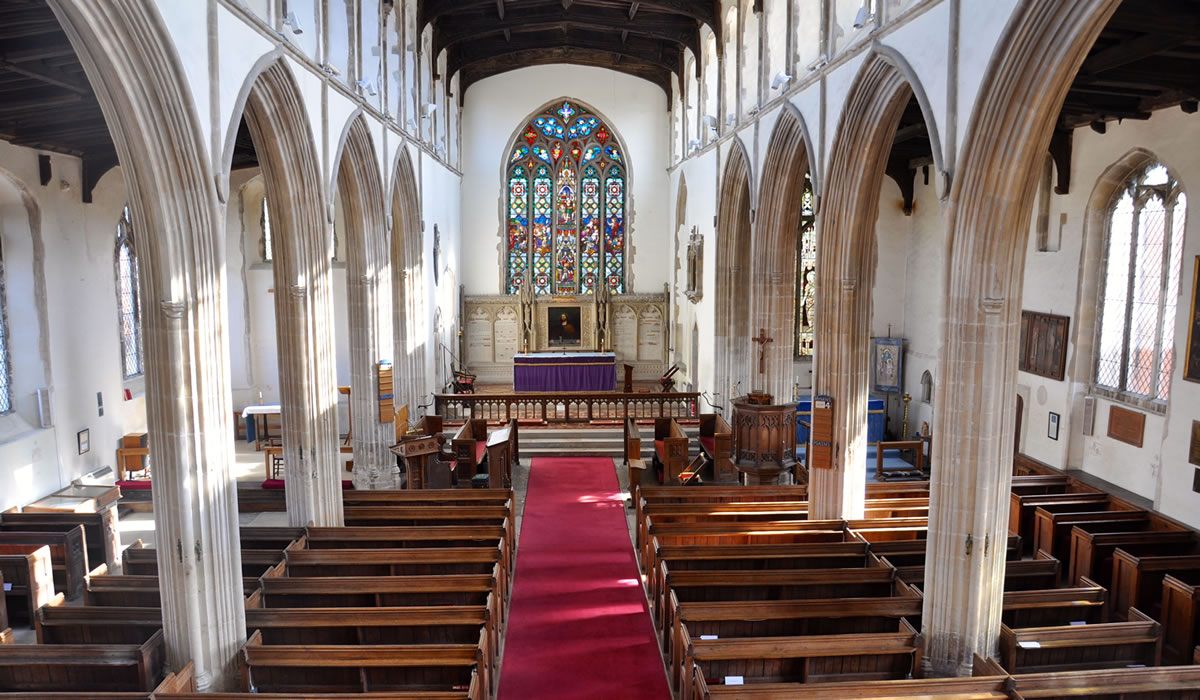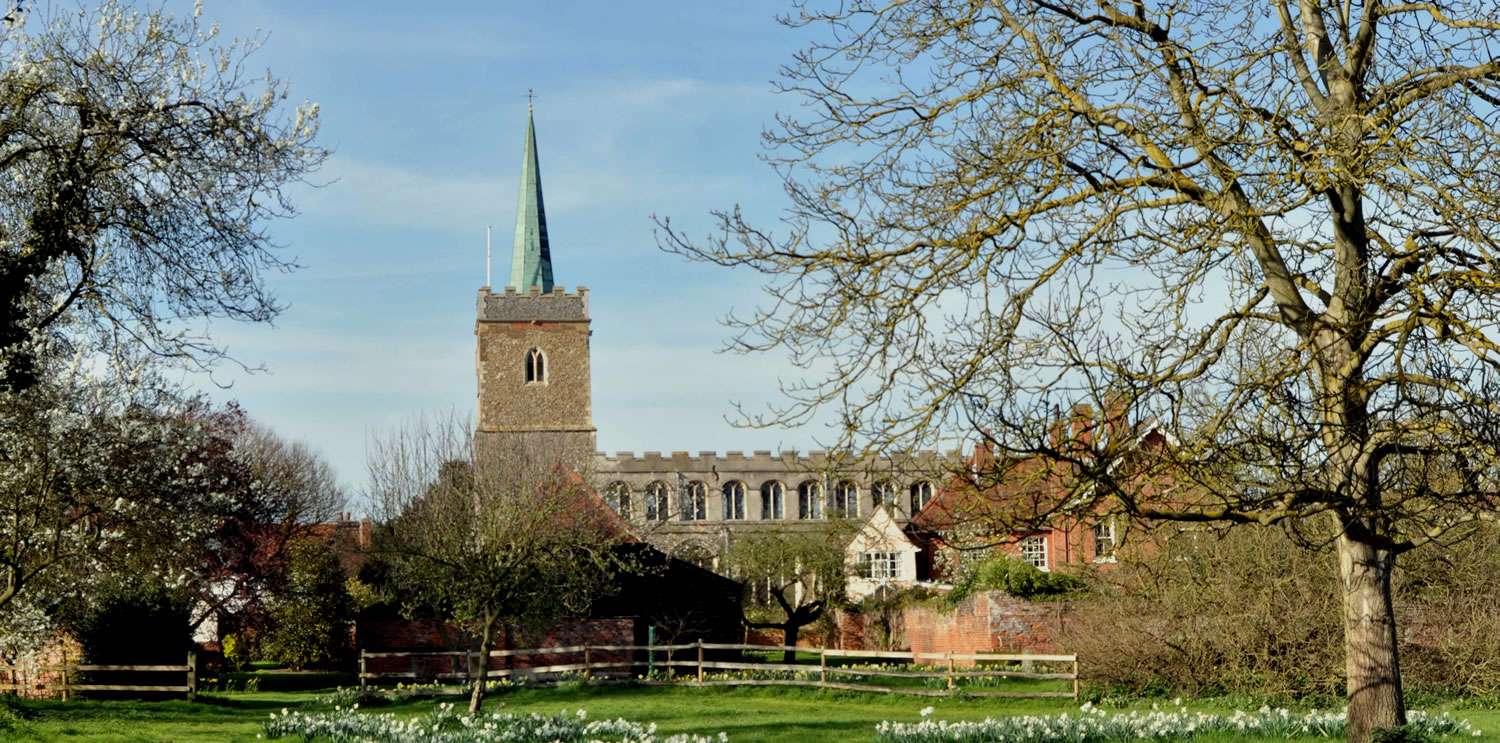
The history of the church in Nayland takes us back over at least six centuries. There is a document signed at Nayland in 1303 in which Edward I proclaims the independence of his "King's Free-Chapel of Nayland" from any jurisdiction by the Bishop of Norwich. In 1333 Nayland was a chapel of ease to Stoke-by-Nayland, but it was not until the end of the 14th century that the flourishing wool and cloth trades brought importance and prosperity. It was around 1400 that the present church was built. During the 14th and 15th centuries there are many records of Nayland clothiers giving money and property to the church. Upheaval was created at the time of Henry VIII. The churchwardens in 1548, hearing that ecclesiastical visitation was to take place with the objective of removing "Popish" images and plate from the churches, converted the goods into money investing it in property. The Act of Uniformity under Elizabeth I appointed Commissioners for, "reforming and repressing all religious heresies and schisms". The sum of two shillings was paid for pulling down the rood loft and a further shilling for destroying the altar.
During the Civil War (1642-1658) St James's Church fell into the hands of the Parliamentarians and a record of 1643 states,
"Nayland Suffolk: We broke down 30 superstitious pictures [this probably included stained glass] and gave orders for taking down a cross from the steeple."
During this period engraved brasses were torn from gravestones, the indentations in the stone work can be clearly seen. These were difficult times but gradually, towards the beginning of the 18th century the importance of the "religious question" subsided.
